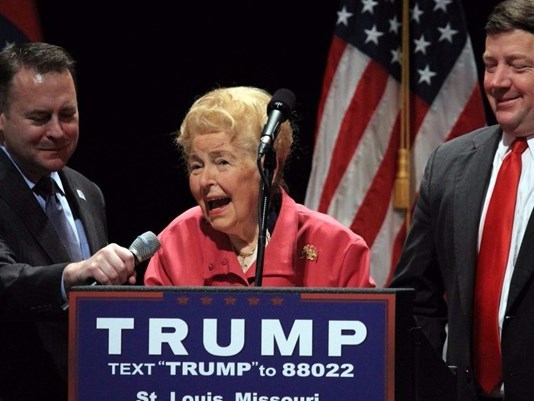-
Tips for becoming a good boxer - November 6, 2020
-
7 expert tips for making your hens night a memorable one - November 6, 2020
-
5 reasons to host your Christmas party on a cruise boat - November 6, 2020
-
What to do when you’re charged with a crime - November 6, 2020
-
Should you get one or multiple dogs? Here’s all you need to know - November 3, 2020
-
A Guide: How to Build Your Very Own Magic Mirror - February 14, 2019
-
Our Top Inspirational Baseball Stars - November 24, 2018
-
Five Tech Tools That Will Help You Turn Your Blog into a Business - November 24, 2018
-
How to Indulge on Vacation without Expanding Your Waist - November 9, 2018
-
5 Strategies for Businesses to Appeal to Today’s Increasingly Mobile-Crazed Customers - November 9, 2018
Conservative Icon Phyllis Schlafly Goes to be With the Lord
Phyllis Schlafly, a conservative – if not notorious – icon for generations who propelled into force a new political movement starting in the 50s, died at her home in St. Louis.
Advertisement
Schlafly’s family was with her when she died Monday afternoon of cancer at her home in St. Louis, her son John Schlafly said.
Her organization Eagle Forum, founded in St. Louis, says on its website that it opposes “the feminist goals of stereotyping men as a constant danger to women”, and that it “exposes the radical feminists”.
Her 1964 book “A Choice Not An Echo” explained the grassroots Republican resistance to the Eastern Establishment and was a historic manifesto for American conservatism.
The Radcliffe graduate who married a member of a wealthy IL family came to prominence in the 1960s with her self-published book “A Choice, Not an Echo”, supporting the presidential campaign of senator Barry Goldwater, who helped lay the future foundations of an increasingly hardline Republican Party.
Born Phyllis McAlpin Stewart on August 15, 1924, Schlafly paid her way through Washington University by working a full-time defense job during the World War II.
Yet Schlafly’s legacy is perhaps most tied to her outspoken criticism of the Equal Rights Amendment, a proposed amendment to the Constitution that would have explicitly prohibited gender discrimination. “In so doing, she essentially launched the pro-family, pro-life movement”.
In her decade-long fight against the ERA, Schlafly traveled across the country to speak at rallies and persuade state legislators not to approve the ERA.
Schlafly is credited with helping to defeat the ERA, who believed that the amendment would cause much harm to American society.
Donald T Critchlow, author of a biography of Phyllis Schlafly, said that defeating the ERA helped to usher in a new conservative era in United States politics, paving the way for Ronald Reagan’s election in 1980.
91 words, not including her own name, Palin penned.
“When I went to the hearings for the Equal Rights Amendment and I heard what they were saying, and they had absolutely no benefit to offer women, but we could see a lot of disadvantages in it”, Schlafly told Martin.
But the amendment lost steam in the late 1970s under pressure from Mrs. Schlafly’s volunteer brigades – mainly women, majority churchgoing Christians (Mrs. Schlafly was Roman Catholic) and not a few of them lugging apple pies to cajole legislators. For better or for worse, American politics wouldn’t be anything like what it is without her.
“What that amendment would do is to make all laws sex-neutral”.
She also had some controversial comments about the Violence Against Women Act, which made major strides in protecting victims of domestic violence.
One of her main arguments against the ERA – along with her beliefs that it would lead to gay marriage, and make it more hard for women to obtain custody in divorce cases – was that it eliminated the men-only draft requirement, and feared it would lead to women joining combat. Her comments received backlash both verbally and physically, when students and faculty at Washington University’s 2008 commencement silently turned their backs to the stage while she received an honorary degree.
Advertisement
“She was a pioneer in the anti-abortion movement and helped send Ronald Reagan to the White House”. Married in 1949, she and her late-husband, Fred, shared forty-four happy years together as well as six children, sixteen grandchildren, and three great grandchildren.





























